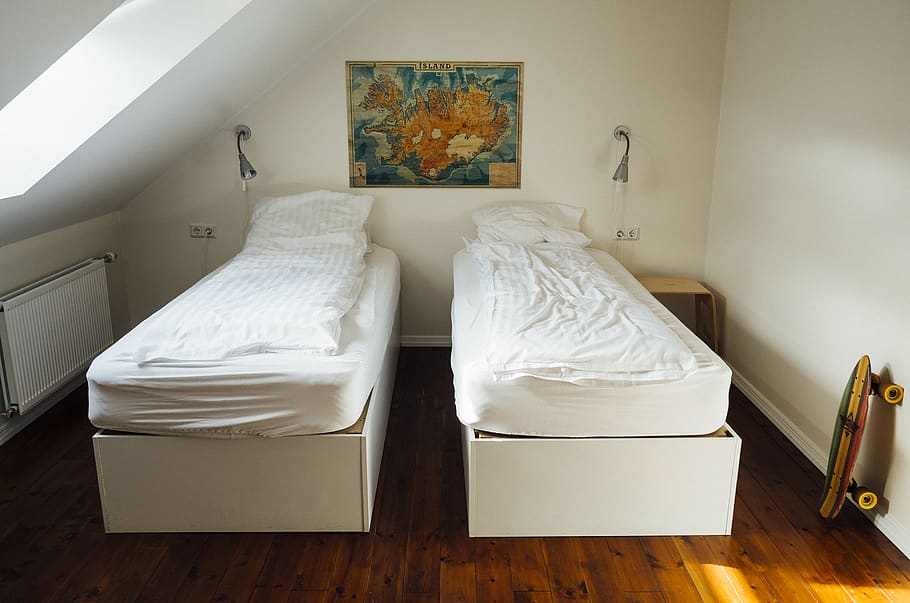How to Get Rid of Bed bugs
Summary
– Step 1: Differentiate between wood bugs and bed bugs
– Step 2: Do you need to get rid of wood bugs?
– Step 3: Get rid of bed bugs
There are two types of bed bugs: the dreaded bed bugs and their harmless cousins, the wood bugs. Controlling wood bugs is unnecessary, but getting rid of a bed bug infestation is tedious.
This handy fact sheet teaches you how to distinguish between them to deal with each species appropriately and summarizes the most important things you need to know to get rid of bed bugs.
1. Differentiate between wood bugs and bed bugs

Recognize wood bugs
Wood bugs (Palomena prasina) fly insects that live outdoors and overwinter under garbage in the garden or woods. However, some may take refuge in your home during the winter.
Wood bugs have a flat, slightly curved shape and measure about 12 mm. There are several species of different colours: brown, green, or red and black.
Far from being thirsty for human blood like bed bugs, wood bugs are harmless to humans and animals: they feed exclusively on the sap of plants, fruits or vegetables.
Recognize bed bugs
Bed bugs (Cimex lecularius) are crawling insects that live all year round inside homes. They have a strong preference for bedrooms, hence their name, and like to sneak into the seams of mattresses. They measure at most 8 mm of flattened form and are brown.
A biting and sucking insect, bed bugs bite the sleeper at night while still in bed and suck his blood. Depending on the person, reactions are mild to intense, often with pimples, swelling and intolerable itching.
The big problem is that it only takes one female bedbug brought home to cause an infestation that is very difficult to get rid of.
2. Should I get rid of wood bugs?

Wood bugs can cause minimal damage to flowers, vegetables or fruit in your garden: no reason to start a fight against them.
In the home, their only nuisance is the stench they give off when stepped on and crushed: to get rid of a few stray wood bugs in your home, drag them onto a sheet of paper and shake them out.
3. Get rid of bed bugs

Controlling a bed bug infestation is a long and tedious process, combining traps, mechanical treatments and chemical insecticide treatments. It will help if you start these treatments immediately after being bitten or seeing a first bed bug in your home.
Examine your bed and box spring
– If in doubt, look for traces of blood and dark brown excrement on your sheets.
– Then, carefully examine your bed, box spring and pillows, especially the seams.
Use bed bug traps
Use one of the following types of traps, placed at each foot of the bed to prevent bed bugs from reaching the bed
– commercially available ready-made traps;
– saucers sprinkled with diatomaceous earth
– containers filled with water, where bed bugs will drown;
– feet of the bed coated with Vaseline.
Get rid of bed bugs mechanically.
– Thoroughly steam clean or vacuum box springs, mattresses, sofas, chairs, curtains, cushions, etc.
– Wash all sheets and clothes at 60°C minimum and use a tumble dryer if possible.
Good to know: textiles that cannot be washed at 60°C can be put in the freezer for 48 hours because the cold also kills bed bugs.
Use insecticides
Only use specific insecticides against bed bugs.
– Start with an attack treatment:
◦ either with a fumigator;
◦ or with an automatic spray can (and then leave the house for at least 3 hours).
With a special bedbug spray, spray the box spring, mattress and all bedding, armchairs, cushions, curtains, floors and baseboards.
Repeat the treatments 2 or 3 times at 3-week intervals.
Call in a pest control company.
If the infestation is significant, do not hesitate to call a specialized company.
You can also ask your city hall for information, as sometimes the hygiene services will take care of the intervention.
Equipment needed to get rid of bed bugs.
Vacuum cleaner
Steam cleaner
Vaseline





